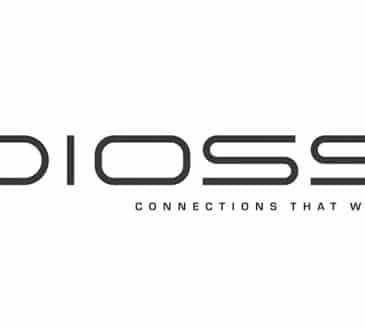CEO Spotlight: Yazan Sehwail of Userpilot on What It’s Like to Lead a SaaS Startup

Meet Yazan Sehwail. Yazan is one of the young, educated, and bold entrepreneurs taking on the challenging work of building a startup in the fast-paced SaaS industry. Yazan is the Co-Founder & CEO of Userpilot; a product experience software that helps companies such as Cisco personalize their in-app user experience for millions of users daily.
He graduated from Friends High School in Ramallah. Afterward, he secured a full academic scholarship to Hamilton College, a top tier NY college where he pursued his Bachelor’s with a specialization in Maths, Computer Science and Economics.
How did you get into software development?
I have started my first software business at the age of 21, and I have more than 9 years of experience in web software development, user research and product experience.
My first business, InnerChip, developed enterprise web software for companies such as BMW. I served as the CEO for almost 5 years and I led the company to over $1.8M in gross revenue while being completely bootstrapped.
What exactly does Userpilot do?
Userpilot is a low-code web-based toolkit that helps product and customer success teams quickly fool-proof their user experience.
We make it simple for teams to build & deploy in-product growth experiments to maximize user adoption rate and boost feature engagement.
Whether they are looking to onboard new users, announce new features or subtly show a hint triggered by an in-app event, they can deploy it in hours, not weeks.
Out of the many things you could build, why did you choose Userpilot?
After spending almost 5 years in product development/management, I was still surprised by how difficult it is to create in-product growth experiments.
Simple UI patterns such as a tooltip or a hotspot that could make a massive difference between a user activation, or a user never coming back were taking days to develop.
For example, if I wanted to create a simple welcome modal for new signups to push them for a certain action, then I’d have to indulge in a development process that could take days, even weeks.
Even worse, making changes to such UI patterns would require additional work.
Now, imagine if I wanted to create complex workflows that would trigger different segments at different stages of the user journey. Coding this would be extremely difficult and time-consuming. Additionally, it would put a strain on development teams, when they should be working on the actual product.
This is exactly why we decided to work on Userpilot. We wanted to give teams a quick and efficient way to manipulate their UI based on the audience and the stage of the user journey without requiring any coding or development time.
Product-market fit is a big topic for startups, do you think Userpilot has product-market-fit?
In my opinion, product-market fit is not either a 0 or 1. In fact, many companies can have product-market fit, but lose it over time if they cannot keep up with their users’ needs and how the market evolves.
At Userpilot, we were determined to be user-centric from day 0. Long before we even wrote a single line of code, we were conducting user interviews and experimenting with different ways of how to approach the problem.
Our biggest validation came two months after when we were able to sign our first contract long before we even had an alpha version ready.
During our closed beta, over 200 teams were already using the product and our iterations were extremely quick to ensure we were aligned with product-market fit.
We officially launched at the beginning of 2-19. Since then, our growth month-over-month has been consistently over 35%.
In your experience building and running Userpilot, what has surprised you the most?
I am still surprised by the number of product teams I come across that still cannot figure out their activation metric, or that still cannot differentiate between activation and trial-to-paid metrics.
We define activation as the series of events that a user is required to take in order to realize the initial bit of value from a certain product. It is definitely the most important metric for product teams to understand and track. It is also highly linked with the users’ willingness to pay for a product.
Users tend to get frustrated if the path to activation is not clearly laid out, or if the time to value is long and friction-based.
Yet, many product teams still don’t pay enough attention to understand this metric.
What are your thoughts on assembling a team?
There is no denying that one of the most essential keys to success in the SaaS industry is the ability to recruit the best talent.
For an early-stage startup such as Userpilot, the best talent almost always means individuals that believe in the product and have the motivation to deliver. Not necessarily the best technically, but those who still have the fire to make things happen.
You certainly cannot teach determination, nor you can teach motivation.
Can you describe a time you had to make a decision in spite of incomplete information and/or constantly changing variables?
More often than not! Especially in the SaaS startup world, a founder is forced to be decisive at times when there are no clear answers.
In SaaS, this could be the question of deciding what features to build next or how to optimize your go to market strategies.
One time, we released a major feature that was widely popular in terms of usage; the data was showing that the user adoption rate was high.
That is a good signal, right?
Yet, our qualitative analysis showed that users were struggling to get value out of it because it required a lot of configuration and it needed to be highly customized.
The idea sounded very good on paper, but disastrous in practice.
In the end, we decided to discontinue it. The data can lie sometimes!
What’s your advice for first-time founders?
If there’s one piece of advice I would give it would be this: never get emotionally attached to your ideas; sometimes ideas fail, and that is OK. The idea here is to learn and try again.
Have you read?
# Ditch the Values Posters – 8 Ways to Bring Your Company Values to Life.
# America’s best cities for IT professionals.
# These Are The Most Dangerous Cities For Pedestrians In The United States.
# Most Dangerous (And Safest) Tourist Cities Around The World.
# Best Countries In The World For 2020.
Add CEOWORLD magazine to your Google News feed.
Follow CEOWORLD magazine headlines on: Google News, LinkedIn, Twitter, and Facebook.
Copyright 2024 The CEOWORLD magazine. All rights reserved. This material (and any extract from it) must not be copied, redistributed or placed on any website, without CEOWORLD magazine' prior written consent. For media queries, please contact: info@ceoworld.biz








